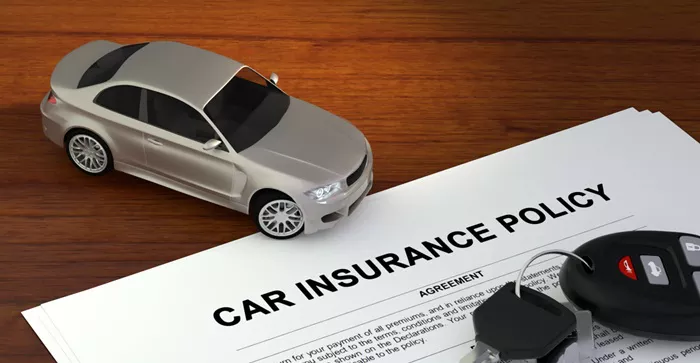Car insurance is essential for protecting yourself, your vehicle, and others on the road. It provides financial coverage in case of accidents, theft, and other unforeseen events. Understanding the different types of car insurance is crucial for making informed decisions about your coverage. This article will explore the 3 major types of car insurance: liability, collision, and comprehensive.
Understanding Car Insurance
Importance of Car Insurance
Car insurance is a legal requirement in most places. It protects you financially if you are involved in an accident or your vehicle is damaged. Without insurance, you could face significant out-of-pocket expenses, legal issues, and financial hardship.
Factors Affecting Car Insurance Rates
Several factors influence car insurance rates, including your driving history, the type of vehicle you drive, your age, location, and the coverage you choose. Understanding these factors can help you make informed decisions about your insurance needs and find ways to save on your premium.
The 3 Major Types of Car Insurance
1. Liability Insurance
What is Liability Insurance
Liability insurance is the most basic type of car insurance and is required by law in most places. It covers the cost of damage and injuries you cause to others in an accident. It does not cover your own vehicle or injuries.
Coverage Details
Bodily Injury Liability: Covers medical expenses, lost wages, and legal fees if you injure someone in an accident.
Property Damage Liability: Covers the cost of repairing or replacing another person’s property damaged in an accident.
Importance of Liability Insurance
Liability insurance is essential because it protects you from financial ruin if you are found responsible for an accident. Without it, you would be personally liable for the damages and injuries, which could be financially devastating.
2. Collision Insurance
What is Collision Insurance
Collision insurance covers the cost of repairing or replacing your vehicle if it is damaged in an accident, regardless of who is at fault. It is not required by law but is often required by lenders if you have a car loan or lease.
Coverage Details
Accidents with Other Vehicles: Covers damage to your vehicle in a collision with another car.
Single-Vehicle Accidents: Covers damage to your vehicle if you hit an object, such as a tree or guardrail.
Rollover Accidents: Covers damage if your vehicle rolls over.
Importance of Collision Insurance
Collision insurance is important because it helps you avoid out-of-pocket expenses for repairing or replacing your vehicle after an accident. This coverage is especially valuable if you have a newer or more expensive car.
3. Comprehensive Insurance
What is Comprehensive Insurance
Comprehensive insurance covers damage to your vehicle from non-collision events, such as theft, vandalism, natural disasters, and animal collisions. It is not required by law but is often required by lenders.
Coverage Details
Theft and Vandalism: Covers the cost of repairing or replacing your vehicle if it is stolen or vandalized.
Natural Disasters: Covers damage from events such as floods, earthquakes, hurricanes, and fires.
Animal Collisions: Covers damage if you hit an animal, such as a deer.
Falling Objects: Covers damage from falling objects, such as tree branches or debris.
Importance of Comprehensive Insurance
Comprehensive insurance provides peace of mind by covering a wide range of potential damages to your vehicle. It protects your investment and ensures you are not left with significant out-of-pocket expenses for non-collision events.
see also: What Does Market Value Mean in Car Insurance?
Choosing the Right Coverage
Assessing Your Needs
When deciding on the right car insurance coverage, consider factors such as your driving habits, the value of your vehicle, your financial situation, and your risk tolerance. Assessing your needs will help you determine which types of coverage are most important for you.
Comparing Quotes
Comparing quotes from multiple insurers can help you find the best coverage at the most affordable price. Use car insurance comparison sites and work with an insurance agent to gather and compare quotes.
Understanding Policy Limits and Deductibles
Policy limits and deductibles play a significant role in determining your car insurance premium. Higher policy limits provide more coverage but come with higher premiums. Similarly, higher deductibles lower your premium but require you to pay more out-of-pocket in case of a claim.
Considering Discounts
Many insurers offer discounts that can help you save on your car insurance premium. Common discounts include:
Safe Driver Discounts: For maintaining a clean driving record.
Multi-Policy Discounts: For bundling multiple insurance policies, such as home and auto insurance.
Good Student Discounts: For students with good grades.
Anti-Theft Discounts: For vehicles equipped with anti-theft devices.
Reviewing Your Policy Regularly
Your insurance needs may change over time, so it is essential to review your policy regularly and make adjustments as needed. Life events such as buying a new car, moving, or changes in your driving habits can impact your insurance needs.
Conclusion
Understanding the three major types of car insurance—liability, collision, and comprehensive—is crucial for making informed decisions about your coverage. Liability insurance is required by law and protects you from financial ruin if you are found responsible for an accident. Collision insurance covers damage to your vehicle from accidents, while comprehensive insurance covers non-collision events such as theft, vandalism, and natural disasters. By assessing your needs, comparing quotes, understanding policy limits and deductibles, considering discounts, and reviewing your policy regularly, you can find the right car insurance coverage to protect yourself and your vehicle.




















